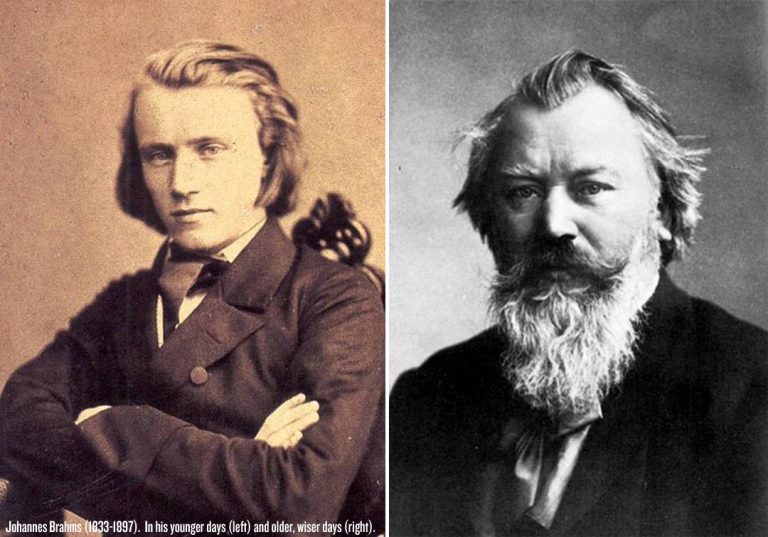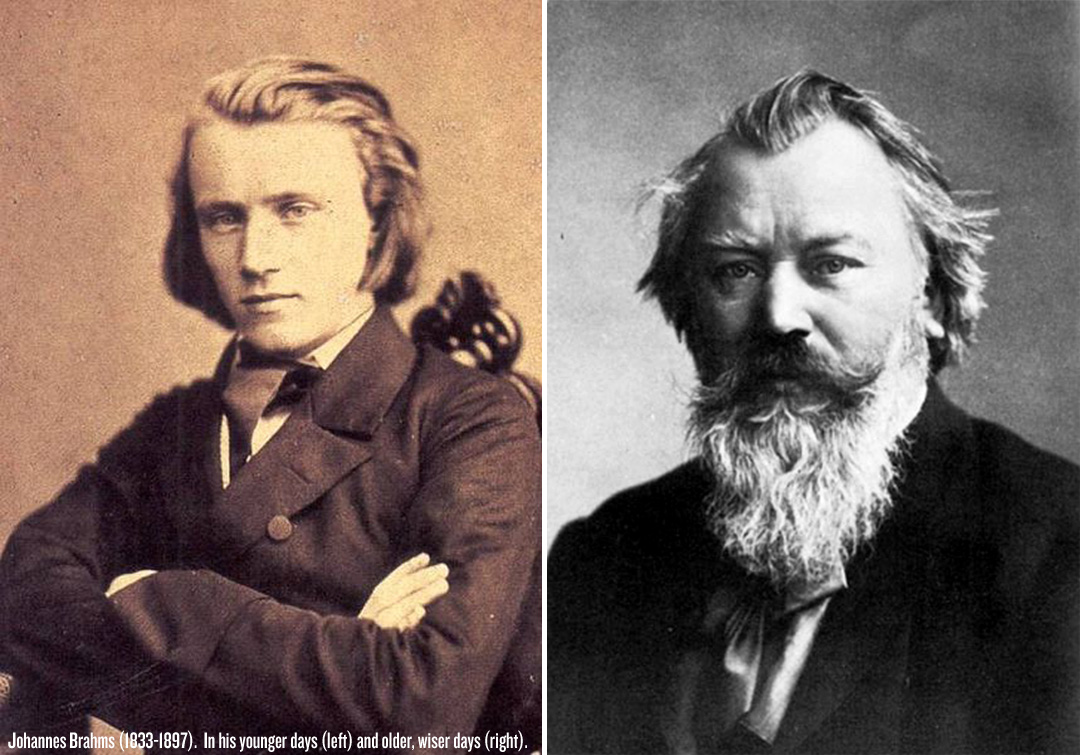Slate just published a gem of mini-biography on German composer and pianist Johannes Brahms (1833-1897). The complexities of classical music can oftentimes seem impenetrable to us layfolk, but it’s long been a fascination of mine to learn as much as possible about the private lives of these classical geniuses and the life experiences that shaped them into who they became.
It’s often said that for the biggest icons of art, the work and inspiration emerges out of tragedy — an irritant piece of sand in an oyster that eventually becomes a pearl. But such is not the case with Brahms — he was devastatingly gorgeous, came from a great family, had tons of friends, and was enormously popular. Brahms did, however, fall in love with the wife of his mentor Robert Schumann. Clara Schumann was a hugely successful pianist in her time, and as her husband began to go mad (he was placed in an asylum after a suicide attempt) Brahms fell head over heels for Clara. When Robert eventually died, Brahms left Clara and then fell in love with her daughter Julie. As Jan Swafford of Slate writes, “When he heard Julie was getting married he wrote the despairing ‘Alto Rhapsody’, which he told Clara was his nuptial song. His friends knew that a theme in the ‘G-Major String Sextet’ spelled out in notes the name of a woman he had jilted after they exchanged rings.” You can hear this song, and read the full fascinating story of Brahms’ life, by visiting Slate.com.
One of my favorite Brahms pieces, though, has to be the Adagio of his Piano Concerto No. 1. Pure amazingness. For more great stories from the world of classical music you can visit Classical Music on FEELguide.



